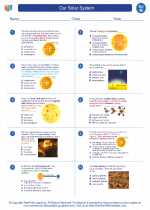Our Solar System -> sand dunes
Sand Dunes
Sand dunes are natural formations found in deserts, coastal regions, and other sandy areas. They are created through the process of wind erosion and deposition.
Formation of Sand Dunes
There are four main factors that contribute to the formation of sand dunes:
- Wind: Wind is the primary agent of sand dune formation. It picks up sand particles and carries them to new locations.
- Sand Source: Sand dunes are formed from sand that is readily available, such as from a beach or a desert.
- Obstacles: Obstacles like rocks, vegetation, or buildings can cause wind to slow down and drop sand particles, leading to dune formation.
- Vegetation: Plants and grasses help to stabilize sand dunes by trapping sand and preventing erosion.
Types of Sand Dunes
There are several types of sand dunes, each with distinct characteristics:
- Barchan Dunes: Crescent-shaped dunes with horns pointing downwind.
- Transverse Dunes: Long ridges of sand that form perpendicular to the wind direction.
- Star Dunes: Complex dunes with multiple arms or ridges, forming a star shape.
- Parabolic Dunes: U-shaped dunes with the tips pointing into the wind.
- Longitudinal Dunes: Elongated dunes that form parallel to the wind direction.
Ecological Importance
Sand dunes support a unique ecosystem and play a vital role in coastal protection. They provide habitats for specialized plant and animal species, and act as natural barriers against coastal erosion and storm surges.
Human Impact
Human activities such as urbanization, tourism, and sand mining can disrupt the stability of sand dunes and lead to environmental degradation. Conservation efforts are important to preserve these natural formations.
Study Tips
To study sand dunes effectively, consider the following tips:
- Understand the processes of wind erosion and deposition.
- Learn to identify and differentiate between various types of sand dunes.
- Explore the ecological importance of sand dunes and the impact of human activities.
- Review case studies and examples of successful dune conservation efforts.
◂Science Worksheets and Study Guides Eighth Grade. Our Solar System

 Worksheet/Answer key
Worksheet/Answer key
 Worksheet/Answer key
Worksheet/Answer key
